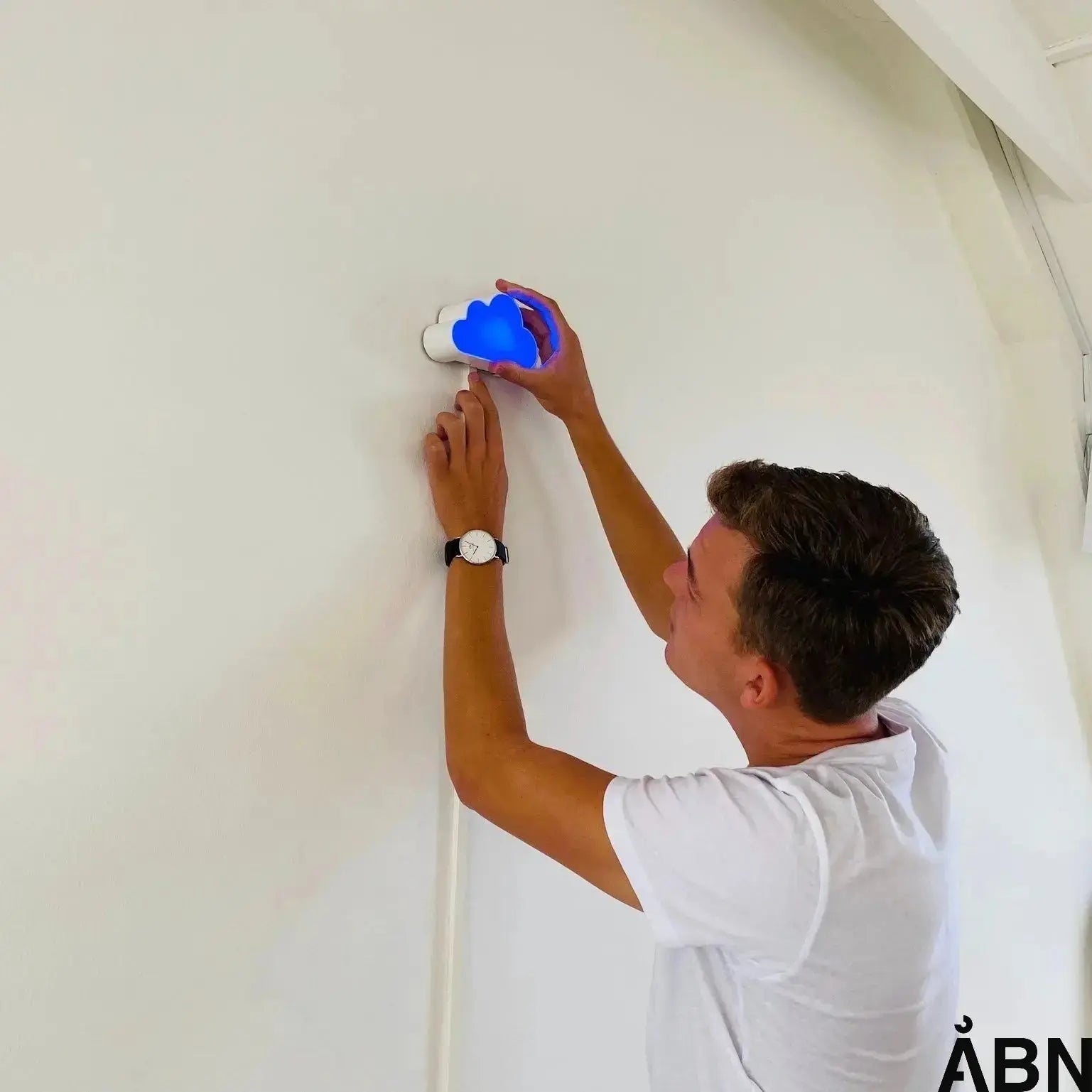Imagine walking into the office on a Monday morning. It’s cold outside, but inside you’re greeted by heavy, warm air and an open window that someone has tried to use as a ventilation system. The temperature fluctuates throughout the day, and you feel it in both your concentration and your mood. Does that sound familiar? Temperature fluctuations in the office aren’t just annoying – they can also affect the well-being, productivity and health of your employees.
In this article, we delve into how you can prevent temperature fluctuations in the office – based on Danish standards, research and technology. We guide you to concrete solutions that both create stable and healthy working conditions and support sustainable operations.
Why are stable temperatures in the office important?
The temperature in the workplace is not just a matter of comfort – it is about the working environment, productivity and health. According to the Danish Working Environment Authority, the temperature in office environments should be between 20-22 °C in winter and up to 24 °C in summer. Temperatures outside this range – or large fluctuations during the day – can lead to headaches, fatigue and reduced concentration.
A stable indoor climate is also crucial to avoid moisture problems, mold and energy waste. And at a time when both the green transition and employee well-being are high on the agenda, there is every reason to take the indoor climate seriously.
What causes temperature fluctuations in offices?
There can be many reasons why the temperature fluctuates in the office. Some of the most common are:
- Inadequate or outdated ventilation and heating systems
- Poor insulation or leaky windows
- Direct sunlight without sun protection
- Lack of control and monitoring of the indoor climate
- Placing workstations close to heat or cold sources
Many office buildings – especially older ones – are not designed to handle the changing Danish climate. This means that temperatures can fluctuate significantly throughout the day and year, resulting in discomfort and energy waste.
How to prevent temperature fluctuations – 5 effective approaches
The solution to temperature fluctuations is not one thing – it is the sum of several actions working together. Here are five key strategies you should consider:
1. Intelligent monitoring and visualization of indoor climate
The first step to solving a problem is understanding it. With modern sensor technology, you can gain precise insight into how the temperature develops throughout the day in different zones of the office. At ÅBN , we have developed intuitive sensors and dashboards that make the indoor climate as easy to understand as the weather forecast. This means you no longer have to guess – you get concrete data that you can act on.
2. Zoning and demand-controlled ventilation
Not all rooms and areas in a building have the same needs. A meeting room with many people requires different temperature control than an empty office. By dividing the building into zones and using demand-controlled ventilation, you can target heating and cooling where it is needed – and avoid overcompensation that creates fluctuations.
According to the Knowledge Center for Energy Savings in Buildings, flexible ventilation systems with heat recovery and automatic control are some of the most effective solutions for creating stable thermal comfort and reducing energy consumption.
3. Solar shading and thermal mass
The sun's rays can be a major source of overheating – especially in offices with large south-facing windows. Therefore , the Danish Building Research Institute (SBi) recommends the use of dynamic solar shading (e.g. automatic blinds or external screens) that can adapt to the position and intensity of the sun. At the same time, the building's thermal mass – e.g. concrete walls and floors – can be used to absorb and smooth out temperature fluctuations over time.
4. Compliance with building regulations and correct sizing
The Danish Building Regulations (BR20 and BR22) set requirements for how ventilation and heating systems should be dimensioned and installed in new and renovated buildings. It is not only about energy consumption – but also about ensuring stable and healthy indoor climate conditions all year round. By following the requirements of the Building Regulations and the Danish Standard , you ensure that your office is equipped to handle both winter cold and summer heat.
5. Behavioral changes and employee involvement
Technology and building engineering are important – but they work best when people use them correctly. That’s why it’s crucial to involve employees in the work of creating a stable indoor climate. These can be simple measures like closing doors, using sun protection correctly or not opening windows unnecessarily.
At ÅBN, we work with visualization and behavioral design that helps employees understand and influence their indoor climate – without it feeling like a burden. When you can see how your actions affect the temperature and air quality, a natural motivation arises to act appropriately.
How do you know if your office has problems with temperature fluctuations?
Many problems with temperature fluctuations are only discovered when employees complain – but by then the damage has already been done. That's why we recommend that you carry out an indoor climate check , where you map the temperature conditions over time and in different zones. This can be done with simple sensors and data visualization – such as ÅBN Inside , which gives you a comprehensive overview of the indoor climate in your building.
A climate check can reveal patterns you wouldn't otherwise notice: Maybe it's always too hot in certain meeting rooms in the afternoon? Maybe the temperature drops drastically in the reception every morning? With that knowledge in hand, you can target your actions and create noticeable improvements.
Benefits of preventing temperature fluctuations
When you invest in stabilizing the temperature in your office, you get much more than comfort:
- Increased productivity: Employees work better in stable temperatures.
- Fewer sick days: Poor indoor air quality can lead to headaches, fatigue and respiratory problems.
- Lower energy consumption: With proper control, you avoid overheating and unnecessary cooling.
- Better working environment: A stable indoor climate sends a signal that employee well-being is important.
- Strengthened sustainability profile: Energy-efficient solutions








